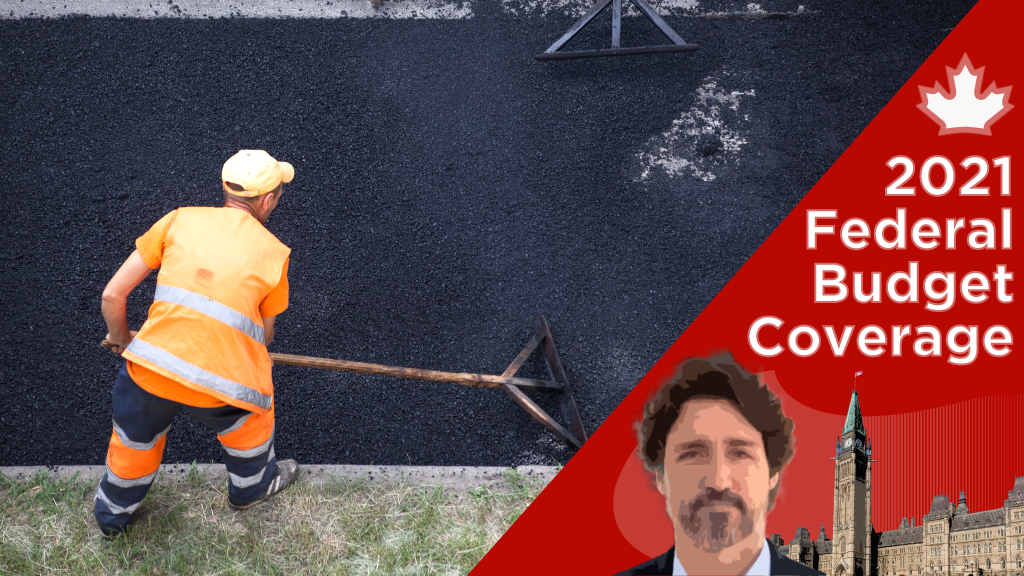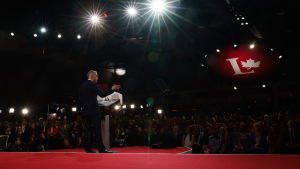While the recently released federal budget includes funding for initiatives that Ontario construction associations have been asking for, some are disappointed in no new money to help municipalities with state-of-good-repair projects.
The Residential and Civil Construction Alliance of Ontario (RCCAO) has been lobbying the federal government for funding for these types of projects, specifically for water and stormwater infrastructure.
“When critical stormwater infrastructure is unable to cope, it can cause billions of dollars in property and environmental damage, so we are happy to see the budget will provide $1.4 billion over 12 years through the Disaster Mitigation and Adaptation Fund to rehabilitate those systems,” said RCCAO executive director Nadia Todorova in a statement.
“However, a Safe Restart Agreement 2.0 or other funding mechanisms is also needed to provide municipalities with financial assistance that will help them weather budget shortfalls caused by COVID-19. Without funding, these projects won’t proceed.”
The RCCAO has asked provincial and federal governments to commit more funding to cover operating deficits for municipalities across the country.
“Some of the investments that have been made in infrastructure, including the $2.2 billion proposed under Bill C-25, which doubled the Gas Tax, that was very helpful but it was characterized as a ‘down payment’ for municipalities and their state-of-good-repair projects, so we were hoping to see a balance of those funds in the budget. We didn’t see that,” she noted.
The $101-billion budget, A Recovery Plan for Jobs, Growth, and Resilience, focuses on economic recovery from the COVID-19 pandemic.
“We are pleased that the government is taking steps in this budget to deal with the economic crisis caused by COVID-19 but is also focused on the future by investing in programs to ensure that industries like construction will have the skilled workers they need for the future,” said Richard Lyall, president of the Residential Construction Council of Ontario (RESCON), in a statement.
The council was also disappointed with the lack of funding allocated for state-of-good-repair projects but applauded the government for skilled trades training programs such as the proposed $470-million investment to establish an Apprenticeship Service to help Red Seal-trade apprentices find opportunities and jobs with employers. It would provide $5,000 in training subsidies to employers and $10,000 for employers who take on BIPOC and women apprentices.
The new Sectoral Workforce Solutions Program, which will see $960 million provided over three years, will help employers design and deliver training to jobseekers while also improving recruitment and retention practices to attract more diverse workers.
“Our industry is at risk of a sharp labour deficit and we need to get more youth into the industry. These programs will certainly help with that effort,” added RESCON vice-president Andrew Pariser.
The budget also included a lot of good investments for the design and engineering industry, said Sandro Perruzza, CEO of Ontario Society of Professional Engineers and chair of the board of the Construction and Design Alliance of Ontario.
“Last year we had been encouraging government to make sure that when they are procuring any services to look at diversity and inclusion as one of the features for submissions, so we are happy to see that reflected in this budget,” said Perruzza. “We were a little disappointed that there wasn’t any new funding for municipalities or state-of-good repair projects.”
While the government has announced billions of dollars for infrastructure through this budget and prior to it, timelines for when the projects will be delivered are needed.
“My one caveat, especially from the engineering and design side, is they’ve got to get that money out as quickly as possible,” said Perruzza. “The reason is other jurisdictions, for example the U.S., just made an announcement as well that they are going to use infrastructure projects as their way of economic recovery post pandemic.
“A lot of the large engineering firms are global firms. If Canada and Ontario are slow to get these projects out these engineering firms will be busy doing engineering design in other jurisdictions and then when we’re ready to actually release these RFPs they will find there won’t be as many engineering firms available to respond. That’s going to be an issue.”
Giovanni Cautillo, president of the Ontario General Contractors Association (OGCA), said he was pleased to see the focus on economic recovery, community-oriented and green infrastructure.
“The OGCA is especially happy to see that the budget will invest $22.6 million over four years in Canada’s first-ever National Infrastructure Assessment,” he said. “This is a crucial step to understand our infrastructure needs better now and in the future.
“The OGCA is also encouraged by the investments in skilled trades training, early learning and child care, supports for employers taking on apprenticeships and efforts to improve diversity in the trades, which are important steps to secure the construction sector.”
Follow the author on Twitter @DCN_Angela.










Recent Comments
comments for this post are closed